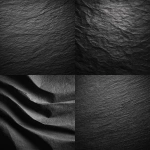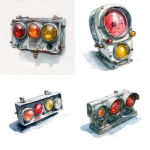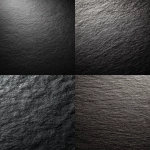Explore the Best AI Image Gallery

Painting with Pixels: How Wearable Tech is Transforming Artistic Expression
The realm of art has always been a playground for innovation, constantly evolving with new tools and mediums. Today, wearable technology stands at the forefront of this evolution, offering artists and designers unprecedented possibilities to express their creativity in captivating new ways. From interactive installations to personalized digital canvases, wearables are blurring the lines between the physical and digital worlds, ushering in a new era of artistic expression.
Wearable Tech: A Canvas on Your Body
Imagine sculpting with your movements, painting with your thoughts, or composing music through gestures. Wearable technology empowers artists to translate their ideas into tangible experiences, transforming the human body itself into a canvas for creation.
- Gesture-Based Art: Devices like smart gloves and motion sensors allow artists to control digital brushes, sculpt 3D models, or manipulate sound waves with intuitive hand movements.
- Biometric Art: Wearables can capture physiological data such as heart rate, brainwaves, and skin conductivity. This data can be translated into visual or auditory art forms, creating dynamic pieces that reflect the artists emotional state or physical sensations.
- Augmented Reality (AR) Experiences: AR headsets overlay digital elements onto the real world, allowing artists to create immersive installations and interactive performances where viewers become active participants in the artwork.
Beyond Traditional Art Forms
Wearable technologys impact extends far beyond traditional art forms. It is redefining how we experience design, fashion, and even architecture:
- Interactive Fashion: Clothing embedded with sensors and LEDs can react to the wearers movements or environment, transforming outfits into dynamic expressions of style.
- Responsive Architecture: Wearables can be used to control lighting, temperature, and other elements within a building, creating personalized and adaptive spaces that respond to occupants needs.
- Collaborative Design: Wearable tools enable designers to share ideas and iterate on projects in real-time, fostering a more collaborative and innovative design process.
Ethical Considerations
As with any powerful technology, wearable tech raises important ethical considerations that need careful consideration:
- Privacy Concerns: Wearables collect vast amounts of personal data, raising concerns about how this information is used and protected.
- Accessibility and Equity: The cost and complexity of wearable technology may create barriers for some artists and designers, potentially exacerbating existing inequalities in the creative industry.
- Misuse Potential: There are concerns that wearable tech could be used to manipulate or control individuals, raising questions about its impact on free expression and autonomy.
The Future of Wearable Art
The future of wearable art is brimming with possibilities. Advancements in artificial intelligence (AI) will likely play a significant role, enabling more sophisticated interactions between wearables and the user, creating truly personalized and responsive art experiences.
- AI-Powered Creativity: AI algorithms can assist artists in generating new ideas, exploring different creative pathways, and refining their work.
- Immersive Storytelling: Wearables will enable artists to create immersive narratives that transport viewers into entirely new worlds, blurring the lines between reality and fiction.
- Global Creative Communities: Wearable technology can connect artists from around the world, fostering collaboration and knowledge sharing on a global scale.
As wearable technology continues to evolve, it has the potential to revolutionize not only how we create art but also how we experience it. The canvas is no longer confined to traditional surfaces; its now an extension of ourselves, waiting to be explored and transformed by the boundless creativity of the human spirit.





](https://images.ai-img.art/thumbnails/150/3c5dc62bba83cc9919c20ebfec8430d31e821cef586a2753dd85ef26d77d480a.webp)


](https://images.ai-img.art/thumbnails/150/8c320ce9aefbbb5b9ec5fd4e1d0fba7388f0fff5b6c2e2f14077cad3008f291d.webp)


](https://images.ai-img.art/thumbnails/150/1accb5453f2335686b162f0a879c7ce73a18516a33868f214a16bdaf95beeb5a.webp)





](https://images.ai-img.art/thumbnails/150/3e8c063b4357fc743a3c6e49a3145ee31b2dcecc018c38d2db8f97bf3e3fda3f.webp)
](https://images.ai-img.art/thumbnails/150/1d7b3a908141474d50d90721c394db29c0cb5404d685ae70ea60430c18e905b7.webp)




